October 13, 2022 | Deborah Kotz
Multi-Center Trial of More Than 12,000 Orthopedic Trauma Patients Likely to Change Standard of Care
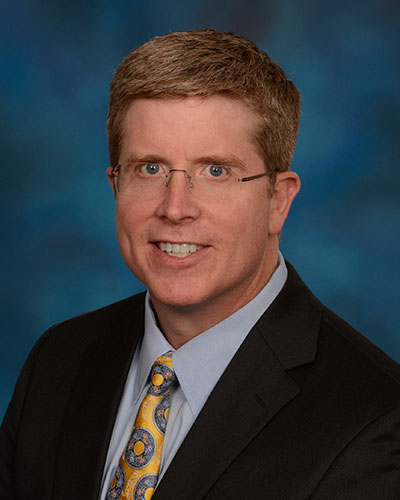
The multi-center randomized clinical trial of more than 12,000 patients at 21 trauma centers in the U.S. and Canada, is the largest-ever trial in orthopedic trauma patients. The trial was co-led by the Department of Orthopaedics at the University of Maryland School of Medicine (UMSOM) and the Major Extremity Trauma Research Consortium (METRC) based at the Johns Hopkins Bloomberg School of Public Health.
“We expect our findings from this large-scale trial to have an important impact on clinical practice, and potentially even change the standard of care,” said the study’s principal investigator Robert V. O’Toole, MD, the Hansjörg Wyss Medical Foundation Endowed Professor in Orthopaedic Trauma at UMSOM and head of the school’s Division of Orthopaedic Traumatology. “Orthopaedic trauma patients are commonly prescribed the blood thinner low-molecular-weight heparin to prevent blood clots for weeks following surgery. Not only does the medication need to be injected, it can also be quite expensive compared to aspirin.”
Blood clots cause as many as 100,000 deaths in the U.S. each year, according to the U.S. Centers for Disease Control (CDC). Patients who experience fractures that require surgery – an estimated 1 million people in the U.S. annually – are at increased risk of developing blood clots in the veins, including a fatal pulmonary embolism, which is a clot in the lung. Current guidelines recommend prescribing low-molecular-weight heparin (enoxaparin), although research in total joint replacement surgery suggested a potential benefit of aspirin as a less-expensive, widely available option.
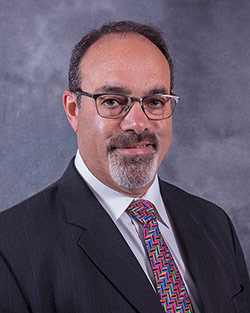
The study enrolled 12,211 patients with leg or arm fractures that necessitated surgery or pelvic fractures regardless of the specific treatment. Half were randomly assigned to receive 30 mg of injectable low-molecular-weight heparin twice daily. The other half received 81 mg of aspirin twice daily. The follow-up period after surgery was 90 days.
The main finding of the study was that aspirin was “noninferior,” or no worse, than low-molecular-weight heparin in preventing death from any cause – 47 patients in the aspirin group died compared with 45 patients in the heparin group. Secondary outcomes noted no differences in non-fatal pulmonary embolism. The incidence of bleeding complications and all other safety outcomes was similar in both groups. Of all the outcomes studied, the one potential difference noted was fewer blood clots in the legs in the low-molecular-weight heparin group. This relatively small difference was driven by clots lower in the leg, which are of unclear clinical importance.
“With data from more than 12,000 patients, this study provides clear evidence that aspirin is a viable option for preventing blood clots in the lung and death in patients who require surgery for orthopaedic trauma,” said Andrew Pollak, MD, the James Lawrence Kernan Professor and Chair of the Department of Orthopedics at UMSOM and Senior Vice President and Chief Clinical Officer for the 11-hospital University of Maryland Medical System (UMMS).
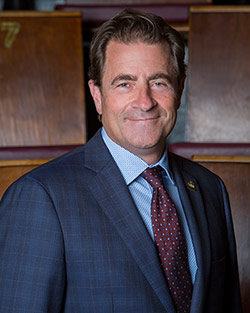
“This exciting trial, the largest ever conducted in orthopedic trauma patients, provides important guidance to surgeons in helping to prevent potentially fatal blood clots after fracture surgery by using a medication that is both inexpensive and easy to administer,” said Mark T. Gladwin, MD, Vice President for Medical Affairs, University of Maryland, Baltimore, and the John Z. and Akiko K. Bowers Distinguished Professor and Dean, University of Maryland School of Medicine.
About the University of Maryland School of Medicine
Now in its third century, the University of Maryland School of Medicine was chartered in 1807 as the first public medical school in the United States. It continues today as one of the fastest growing, top-tier biomedical research enterprises in the world -- with 46 academic departments, centers, institutes, and programs, and a faculty of more than 3,000 physicians, scientists, and allied health professionals, including members of the National Academy of Medicine and the National Academy of Sciences, and a distinguished two-time winner of the Albert E. Lasker Award in Medical Research. With an operating budget of more than $1.3 billion, the School of Medicine works closely in partnership with the University of Maryland Medical Center and Medical System to provide research-intensive, academic, and clinically based care for nearly 2 million patients each year. The School of Medicine has nearly $600 million in extramural funding, with most of its academic departments highly ranked among all medical schools in the nation in research funding. As one of the seven professional schools that make up the University of Maryland, Baltimore campus, the School of Medicine has a total population of nearly 9,000 faculty and staff, including 2,500 students, trainees, residents, and fellows. The combined School of Medicine and Medical System (“University of Maryland Medicine”) has an annual budget of over $6 billion and an economic impact of nearly $20 billion on the state and local community. The School of Medicine, which ranks as the 8th highest among public medical schools in research productivity (according to the Association of American Medical Colleges profile), is an innovator in translational medicine, with 606 active patents and 52 start-up companies. In the latest U.S. News & World Report ranking of the Best Medical Schools, published in 2021, the UM School of Medicine is ranked #9 among the 92 public medical schools in the U.S., and in the top 15 percent (#27) of all 192 public and private U.S. medical schools. The School of Medicine works locally, nationally, and globally, with research and treatment facilities in 36 countries around the world. Visit medschool.umaryland.edu
Contact
Deborah Kotz
Senior Director of Media Relations
Office of Public Affairs & Communications
University of Maryland School of Medicine
Email: DKotz@som.umaryland.edu
o: 410-706-4255
c: 410-804-0054
t: @debkotz2
Related stories
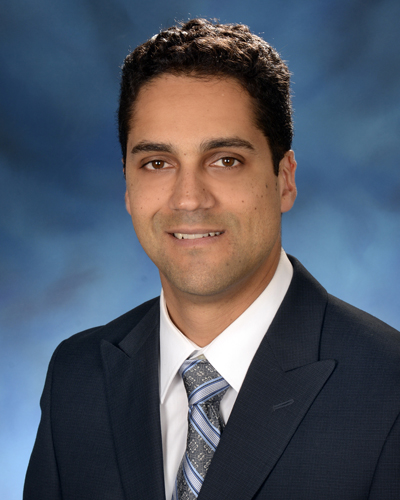
Friday, February 07, 2025
UM School of Medicine Surgeon-Scientist to Co-Lead Large International Clinical Trial to Determine Most Effective Treatment for Common Hip Fracture in Older Adults
Hip fractures in older adults can lead to serious complications, disability and even death. Traditionally, orthopaedic surgeons have repaired a common fracture of the upper part of the thigh bone, or femur, near the hip using screws and plates to piece together slightly separated pieces of bone. But many surgeons now treat these “minimally displaced” femoral neck fractures by replacing the hip joint with a metal implant.

Thursday, July 25, 2024
Orthopaedic Surgeon-Scientist Dr. Frank Henn Named Chair of the Department of Orthopaedics
University of Maryland School of Medicine Dean Mark T. Gladwin, MD, announced today that R. Frank Henn, III, MD, Professor of Orthopaedics, who has served as Interim Chair of the Department since 2022, has been appointed to serve as the new Chair of UMSOM’s Department of Orthopaedics, effective immediately.

Wednesday, January 31, 2024
Large Multicenter Clinical Trial Finds that Antiseptic Containing Iodine Reduces Surgical-Site Infections in Patients with Extremity Fractures
A large multicenter clinical trial co-led by University of Maryland School of Medicine researchers found that an antiseptic containing iodine resulted in about one-quarter fewer post-surgical infections in patients with limb fractures compared to another frequently used skin antiseptic. The results of the study of nearly 8,500 patients across the United States and Canada were published today in the New England Journal of Medicine.

Wednesday, January 18, 2023
Aspirin as Effective as Blood Thinner Injections to Prevent Deadly Complications in Patients Hospitalized with Bone Fractures
Patients hospitalized with fractures typically receive an injectable blood thinner, low-molecular-weight heparin, to prevent life-threatening blood clots. A new clinical trial, however, found that inexpensive over-the-counter aspirin is just as effective. The findings, published today in the New England Journal of Medicine, may lead surgeons to change their practice and administer aspirin to these patients.

Wednesday, November 02, 2022
Orthopaedic Surgeon Dr. R. Frank Henn Appointed Interim Chair of the Department of Orthopaedics
University of Maryland School of Medicine (UMSOM) Dean Mark T. Gladwin, MD, announced today that R. Frank Henn, III, MD, Professor of Orthopaedics, has been appointed to serve as the Interim Chair of UMSOM’s Department of Orthopaedics, effective December 1, 2022.
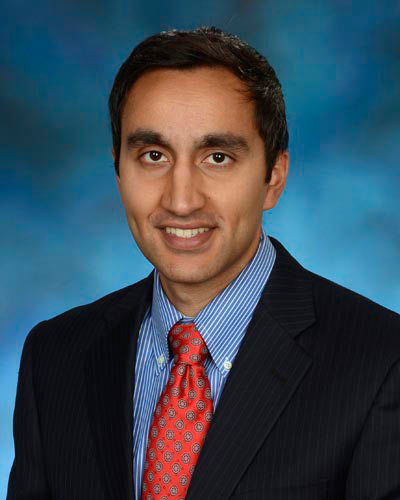
Tuesday, December 05, 2017
University of Maryland School of Medicine Orthopaedic Surgeons to Receive Prestigious International Research Award
A research team led by Mohit N. Gilotra, MD, assistant professor of orthopaedics at the University of Maryland School of Medicine (UMSOM), will receive the prestigious 2018 Charles S. Neer Award from the American Shoulder and Elbow Surgeons (ASES) for a clinical study that demonstrated an effective method to potentially reduce the risk of serious infection following shoulder surgery.

